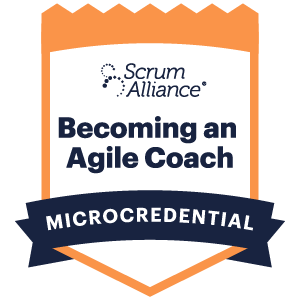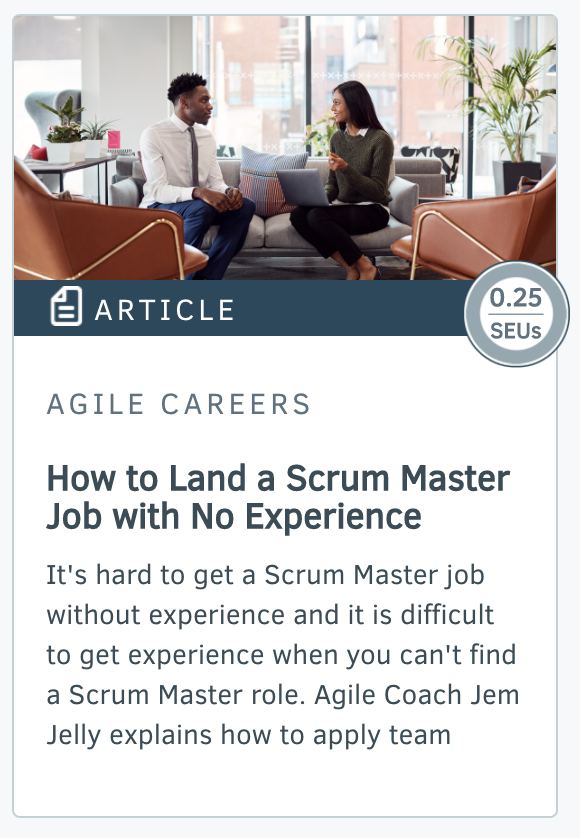Why should non-developers attend hackathons to get agile experience?

In my talk, 3 Steps to Launch Your Agile Career, I mentioned that participating in a hackathon is a great way for newcomers to the field to gain agile experience.
This applies to developers and non-developers alike. Here are seven ways you can gain Scrum experience at a hackathon.
Work Towards a Product Goal or Sprint Goal
At a hackathon, you must identify the product or solution that you will build. You have a goal in mind and work towards achieving that goal in a short period of time. You determine an MVP (Minimal Viable Product) and the features that it will include.
This is just like how a scrum team works with a product backlog that emerges with items (features) based on the overall product goal. In each sprint, the team determines a sprint goal that will get them one step closer to the overall product goal.
Work in a Timebox
A hackathon has a predetermined start time and end time. Within this period, you are charged with properly managing your time, planning out the work, and breaking down your activities into manageable pieces. You must come up with an idea, determine the features, determine your activities, build the product, and deliver it all within the timeline.
In Scrum, sprints are fixed in duration and include determining the sprint goal and the product backlog items to take on, tasking out the work, executing on it, and then delivering a working product increment at the end of the sprint.
Focus on a Deliverable
A hackathon is when you must focus on your work to deliver your product, showcase, and pitch it at the end. Any distractions will likely result in an unfinished solution with not much to show.
In Scrum, teams work in sprints and are focused on delivering on the sprint goal. At the end of the sprint, the team delivers a working product increment. Scrum teams minimize disruptions within the sprint, stay focused on the work, and do not accept changes that will jeopardize meeting the goal.
Empathize and Collaborate with the Customer
At hackathons, especially local hackathons for a social cause, a problem statement is presented about a social need or pain point. You hear firsthand about these pain points, empathize with the users, and see how your solution will address a real issue.
In Scrum, teams regularly collaborate with stakeholders and customers to better understand their needs, feel their pain, and ensure that the product is valuable enough to address the customer’s needs
Validate Your Ideas
At a hackathon, you come up with an idea or hypothesis and then get feedback on it. This helps you and the judges decide whether to pursue your idea, pivot, or move on to something else.
Scrum is based on empiricism and its three pillars of transparency, inspection, and adaptation. In the sprint review, the scrum team and the stakeholders inspect the product increment and then collaborate on what to work on next by adapting the product backlog. It’s all about regularly getting feedback and ensuring everything is on the right track before moving forward onto the next sprint.
Pitch a Solution
At the end of a hackathon, you present and pitch your idea and product. This affords you the opportunity to sharpen your presentation skills, work on creating an elevator pitch, differentiate your product from others, and lay out a future vision and direction. These are key skills needed on any scrum team.
Work with a New Cross-Functional Team
In hackathons, you form groups of three to six participants. Most participants do not know each other and have different skill sets at varying experience levels. Team dynamics come into play. You must quickly assess what each person brings to the table, how best you can contribute and how to self-organize and collaborate to get the job done. These same dynamics occur on scrum teams.
These all apply to technical and non-technical participants. You can contribute, no matter your primary skillset. You might come up with a vision, build a product backlog, spark new ideas, do market research, interview potential users, generate paper prototypes, validate your product ideas, help with removing impediments, help with HTML or CSS, test the product, prepare the presentation, and deliver the final pitch.
If you want to go beyond that and build something, you can go with a no-code platform like Google’s appsheets or bubble.io. These platforms do not require programming skills.
You can also try a non-tech innovation hackathon where you go through the same process, except the goal is to come up with new creative solutions for real-world problems without necessarily building a product. Though not quite the same as a sprint, you will still learn valuable skills and flex your innovation muscles.
All-nighter hackathons can be tough. Try a weekend hackathon instead. You get to go home, rest, and come back the next morning refreshed, energized, and focused.
Finally, in addition to learning new skills, make sure you take this opportunity to meet new people, expand your network, and most importantly, have fun.
Related Article
Article - How to Land a Scrum Master Job with No Experience
About the Author

Fadi Stephan is the founder of Kaizenko, a Scrum Alliance Registered Education Provider (REP) that provides Scrum training and agile coaching to help teams and organizations transform, innovate, and deliver impactful products. Fadi is a Certified Scrum Trainer® and Agile Coach with more than twenty years of experience at startups, government agencies, and Fortune500 companies across various sectors including financial, hospitality, and homeland. Fadi's expertise is in product development, agile adoption, and digital transformations. Fadi is also the co-organizer of Washington DC’s largest Scrum User Group (DCSUG). When Fadi is not training or coaching he enjoys skiing and cycling.











